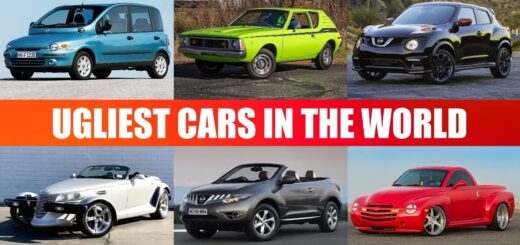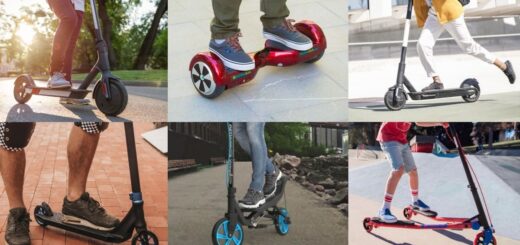14 Parts of Forklift and Their Functions [Complete Guide]
![14 Parts of Forklift and Their Functions [Complete Guide]](https://engineeringlearn.com/wp-content/uploads/2023/06/Parts-of-Forklift-1024x539.jpg)
Introduction
14 Parts of Forklift and Their Functions [Complete Guide]: – There are numerous industries or enterprises that rely upon the ability to efficiently move products and materials in a warehouse for shipping, storage, and different purposes. Any failures or interference of the material movement can lower the productivity of an organization and hurt its bottom line.
This makes it critical to not just have a good system set up to move materials efficiently, however to likewise have quality, dependable equipment to take care of business. One of the most important of equipment used to move materials in a large number of settings from factories and warehouses to retail stores is the forklift.
What is a Forklift?
A forklift is a powered-industrial truck that is used to lift and move materials over short or brief distances otherwise called fork truck, is an motor-driven industrial truck utilized for lifting and moving goods on a pallet inside the premises of a warehouse, storerooms and distribution center. The forks take the weight or heaviness of the load as one with the carriage of the truck. Forklifts serve the necessities of different industries including distribution centers and other large storage facilities. Larger organizations have whole fleets of forklifts that they rely on routinely to ensure maximum efficiency of their material movement.
Forklifts are complex or perplexing parts of equipment that are comprised of various parts and these forklift parts are themselves included parts like bearings, chains, and sprockets. The forklift is a remarkably flexible work vehicle designed for quickly moving heavy cargo loads through a distribution center or industrial worksite. Anyone who operates a forklift or deals with an operation utilizing these machines ought to acquire an understanding of what are the parts of a forklift.
Parts of Forklift
List of 14 parts of forklift: –
- Truck Frame
- Operator Cab
- Counterweight
- Forklift Mast
- Power Source
- Forklift Carriage
- Brakes
- Swing Cylinders
- Cab Enclosure
- Forklift Attachments
- Forklift Forks
- Lamps
- Forklift Tires
- Warning Signals and Alarms
1. Truck Frame: ( Parts of Forklift )
The truck frame or casing of a forklift looks like the chassis of any car, it is the metal frame that an considerable lot of the important forklift parts are attached or joined which includes the wheels and axles, engine, mast, counterweight, and overhead guard. In certain forklifts, tanks for fuel or hydraulic fluids are built into the truck frame.
2. Operator Cab: ( Parts of Forklift )
The operator cab is the area where the forklift driver sits to operate or work the equipment. The cab contains a variety of forklift controls and working parts and features used to move and control the forklift. In specific forklifts, the cab will have a seat for its operator while others are designed and intended for the operator to stand. The steering system within a forklift regularly utilizes a hydraulic steering system and turns the back axle while pivoting on the front tires.
Below are the levers that are found in operator cabs are discussed below: –
- Tilt lever: – They are utilized to adjust the angle of the forks.
- Lift lever: – They are utilized to lift the forks up and down.
- Side shift lever: – They are utilized to evenly move the carriage.
The overhead guard is an extension of the operator cab that supports a metal rooftop over the head of the operator. On certain forklifts, the cabs might be encased and include heating and cooling.
3. Counterweight: ( Parts of Forklift )
The counterweight is a weight toward the back of the forklift that is installed into the frame of the truck. Its purpose is to counterbalance the weight of the load lifted or carried by the forklift to keep it stable and forestall tipping.
The counterweight is designed exclusively to counterbalance the intended most extreme carrying capacity. Forklift operators should realize the maximum carrying capacity to forestall serious mishaps.
4. Forklift Mast: ( Parts of Forklift )
The forklift mast is responsible for the principal capability of the forklift. It is the upward or vertical assembly toward the front of the forklift which comprised interlocking rails that lift the forks as well as the carriage with the load. These rails are powered by no less than one hydraulic cylinder either directly or with chains driven by the cylinders.
Ordinarily, forklift masts comprise tilt and lift cylinders: –
(A) Tilt Cylinder
The purpose of tilt or Slant chamber is that it controls the tilt or slant of the carriage as well as the fork’s angle.
(B) Lift Cylinder
The lift cylinder drives the vertical movement of the load on the mast. This is generally a solitary acting cylinder and not entirely set in stone determined by the mast size and number of stages. Contingent upon the amount of use and load size, lift cylinders might require replacing over the life of the truck.
It is feasible for forklift mast to incorporate numerous stages that will expand the height of lift as well as weight capacity.
5. Power Source: ( Parts of Forklift )
Forklifts have two principal power sources: an internal combustion engine or on account of electric forklifts, an electric engine powered by a battery or fuel cells. Forklifts with an internal combustion engine can burn gas, LP gas, CNG, or diesel fuel. These engines are like combustion engines in vehicles, infusing liquid fuel and air into a cylinder with a piston that is controlled by a crankshaft (driving rod). A spark plug starts the explosion that pushes the piston down in the cylinder, and the descending energy is further converted into mechanical energy to power the forklift. Combustion engines of Forklift are comprised of numerous internal components, which includes chains, gears, and bearings that keep them functioning in an appropriate manner.
6. Forklift Carriage: ( Parts of Forklift )
The carriage is a significant part of the mast that is utilized to lift and stabilize the load. The forks and load backrest are by and large considered parts of the carriage: –
(A) Forks
The forks are the protruding bits of metal at the lower part of the carriage that is used to lift the load (heap) from the base. They arrive in a range of widths, lengths, and sizes to suit various purposes.
(B) Load Backrest
This is the flat surface along the back of the carriage that assists with supporting the load. Operators can rest the load against the backrest, and the backrest additionally prevents the load from sliding back into the operator.
7. Brakes: ( Parts of Forklift )
Forklift brakes are comprised of brake shoes as well as a brake drum. They are engaged by means of a foot pedal or a handbrake. Various modern day electric forklifts have regenerative braking, which uses the electric motor to slow the forklift, with the energy generated used to put charge into the battery.
8. Swing Cylinders: ( Parts of Forklift )
A few trucks have swing cylinders. These cylinders permit the load to swing left or right up to 90° relying upon application. They may be an essential part of a scissor expansion that pushes the load forward away from the mast to allow the swing cylinders to lock in.
9. Cab Enclosure: ( Parts of Forklift )
Cabs may be open or enclosed depending on safety concerns or the environment:-
(A) Seat
In “sit down” forklifts, the driver seat is positioned or situated to permit the operator full reach of all control. In electric lifts, the seat also acts as an auto-off, meaning that when the operator stands or leaves the forklift, power to the lift is cut.
(B) Lever Controls
The lever controls allow the operator to engage the lifting mechanisms to manipulate the load. These levers include:
- Tilt Lever – This lever controls the angle of the forks relative to the ground.
- Lift Lever – Lift lever engages the lift mechanisms on the mast.
- Side Shift Lever – This Lever allows the load to be moved a few centimeters left or right.
- Swing Lever – For trucks with a swing mechanism such as those used for racking systems, the swing lever allows the load to be turned up to 90° left or right. This system will likewise include or incorporate a scissor mechanism and an extension lever that permits the swing load to be pushed forward for positioning inside a rack.
(C) Overhead Guard
In potentially hazardous environments, an over head guard may be placed to protect the operator from falling debris or load failure when at height. Overhead guards may also be reinforced if needed.
10. Forklift Attachments: ( Parts of Forklift )
In some cases, a couple of forks don’t work for the load you want to deal with on a forklift. Attachment permit your forklift to turn out to be more effective and versatile in taking care of unique material and handling products. Most of these attachments allow for additional capability or support for large, heavy, or unconventional loads. The stability of a forklift can be significantly changed by an attachment.
11. Forklift Forks: ( Parts of Forklift )
There are many kinds of forklift forks, and each type will have various options for lengths, widths, profundities, as well as capacities.
12. Lamps: ( Parts of Forklift )
Forklifts have a few unique sorts of lamps relying upon application. One of the most widely recognized is a lamp attached to the overhead guard. This lamp is a directional light source controlled or constrained by the operator. Like a spotlight, it is useful in providing spot lighting in truck closures, containers, and different spaces where loads are being placed or removed. Larger trucks that operate outside or around nighttime might have a formal set of headlights like those of an automobile.
The majority of the trucks have red and yellow tail lights to indicate and demonstrate breaking, back up and turning. Contingent upon model and size, some may come with a yellow or red revolving safety light or a strobe light on the highest point of the truck.
13. Forklift Tires: ( Parts of Forklift )
Forklift tires are significant enough for providing the traction or footing that is needed to move the forklift in safe and in efficient way. There are few kinds of forklift tires accessible, and forklifts might have different tire layouts. While most forklifts have four wheels, there are some that are utilized inside that have three-wheel layouts that can move in limited or restricted space.
By and large, forklift tires are one of the following two sorts:
(A) Pneumatic Tires
These tires are better suited for outdoor environments because they have the traction to handle rough and uneven surfaces. There are pneumatic tires that swell with air, and pneumatic tires are made using strong elastic.
(B) Cushion Tires
These tires are utilized inside on smooth, flat surfaces since they have low traction or footing. They are great for workspaces that require a small turning radius and they are not difficult to maintain and are relatively inexpensive.
14. Warning Signals and Alarms: ( Parts of Forklift )
Forklift safety is critical as there is still a large number of injuries each year utilizing lifts within the work environment. To help with safe operation, numerous forklifts have alarms and signals when the truck is being used. Below are alarms that are used for safety purposes.
(A) Max Height Alarm
This alarm cautions the operator that the lifted load exceeds or surpasses the maximum rated weight for the lift.
(B) Backup Alarm
Automatically draws in when the lift is moving backward to warn workers and walkers close by.
(C) Low Power
It is critical to maintain power all through the lift cycle. Low power indicators, for example, an electric charge indicator or a fuel gauge might emit an audible sound when fuel or power is excessively low.
(D) Horn
Many alarms and signals included on forklifts are automatically locked in. The horn, in any case, is constrained by the operator. This allows an extra admonition warning helpful in noisy environments and blind corners.
Conclusion
In Heavy use conditions, many parts will require replacement while others will last the lifetime of the forklift. Notwithstanding, a strong maintenance program and diligent service in conjunction with a decent working knowledge of the parts of the forklift purchased will provide a long-term profit from the venture and one that is safe for all involved. With such an operational success riding on forklifts, keeping them serviced and in legitimate running condition is principal for any organization. Furthermore, because of the type of work they do and the conditions wherein they operate, owners and support staff should understand the construction and parts of a forklift to keep them in service.













